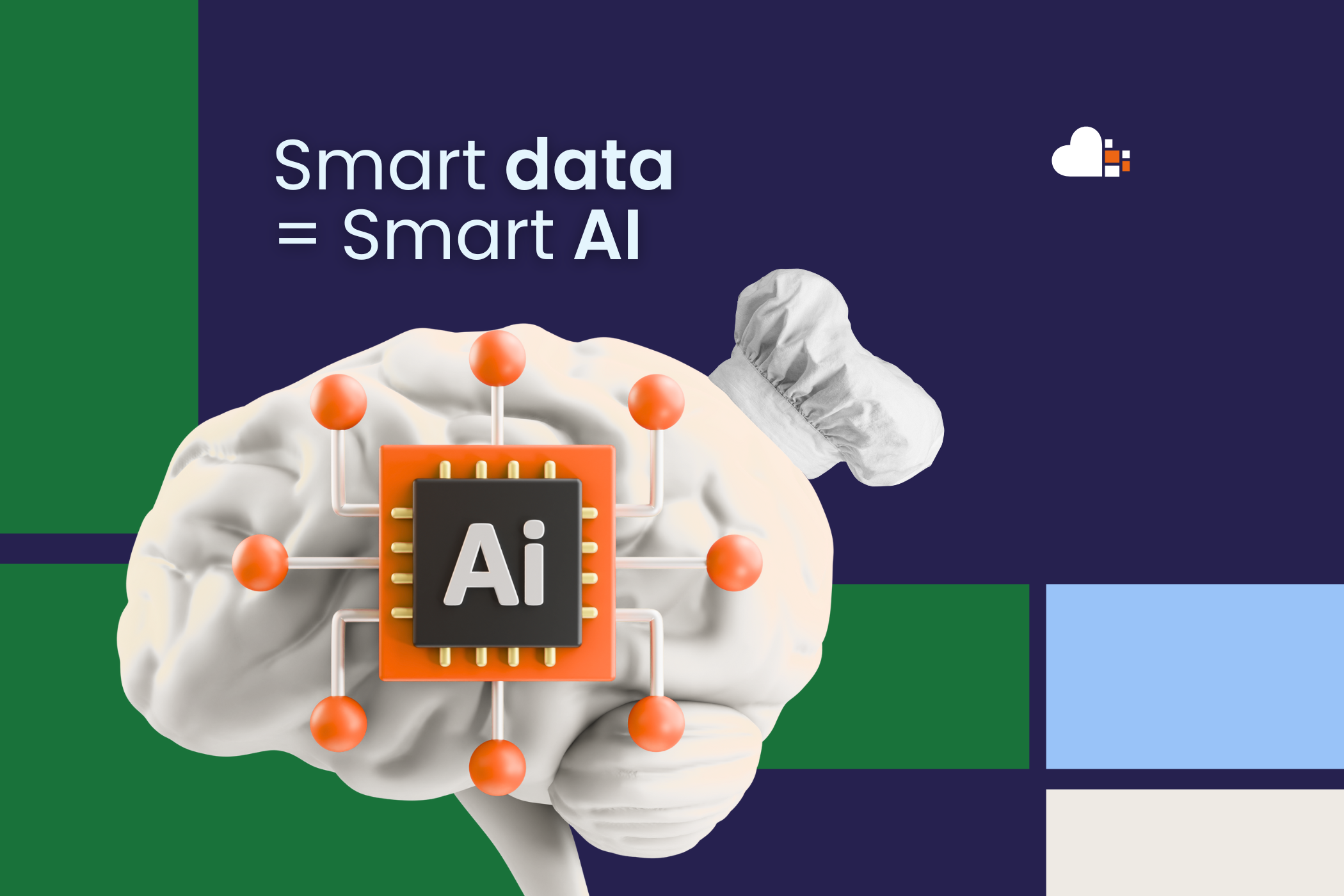From automating decisions to improving customer experiences; it offers real opportunities. But not all AI is created equal. To achieve meaningful results, companies need to understand the different types of AI and what data is needed to make them work.
Imagine a chef trying to make a pear tart. If the ingredients are not fresh, measured incorrectly or simply not right, the pie fails. It then doesn’t matter how talented the chef is. The same goes for AI: a powerful model is useless if the underlying data is messy, scattered or poorly structured.
At i-spark, we have experience with a variety of AI applications. From machine learning models for churn prediction to AI-driven analytics with tools like Snowflake Cortex, OpenAI and visualization platforms like PowerMetrics with natural language processing. And one thing is clear: strong results start with reliable data. Not just the quality, but also how accessible and usable that data is. If your data is in silos, scattered across separate tools or doesn’t have shared definitions, you simply can’t use it effectively. AI cannot apply magic to a chaotic data landscape.
To really understand what AI needs, we need to break it down. Not every AI works the same way. Different forms require different types of data. Let’s start with the form that many companies are already familiar with.
1. Machine Learning (ML): AI based on structured data
Machine learning is not new. When we started it years ago, we simply called it “predictive modeling. It has since come under the broader heading of “AI,” but the idea is the same: use your own structured business data to discover patterns and make predictions.
Common ML applications are:
- Predicting customer turnover (churn).
- Predicting product demand
- Detecting fraud based on behavioral patterns
- Segmenting users based on shared characteristics
These models are trained on your internal data. They do not extract information from the Internet or public sources. That is precisely what makes them so valuable, and at the same time demanding. They require structured, consistent data sets that fit your business context.
The better your underlying data flows, definitions and data structure are, the more powerful the model becomes. These models don’t “invent” anything themselves. They learn exactly what you teach them. Is your data incomplete, unclear or not aligned with your real business logic? Then you’ll see that immediately in the model.
In short, the model is as smart as the data you put into it.
2. Large Language Models (LLMs): AI based on text
LLMs such as ChatGPT or Gemini also technically fall under machine learning. But because they work so differently from traditional ML models, we treat them as a separate category.
Instead of structured data, LLMs are trained on vast amounts of unstructured text, mostly from the Internet.
They are ideal for:
- Text writing and summarizing
- Controlling chatbots and virtual assistants
- Generate or explain code and queries
But . they don’t know your organization. LLMs don’t understand your KPIs, definitions or customer segments until you provide them explicitly. By themselves, they can’t answer meaningful questions about your data or performance.
Back to our metaphor: LLMs are like chefs who master popular recipes from cookbooks. But if you want something specific, like a pear pie, they won’t get very far if they’ve only practiced with apples.
3. Other AI types: visual, interactive and agentic
Not all AI falls under machine learning or language modeling. There are also other techniques with their own applications.
Examples include:
- Computer Vision: recognizes images or video, for example, for quality control, face recognition or medical image analysis.
- Reinforcement Learning: learns through trial and error. Used in robotics, games or logistics.
- Agentic AI: works autonomously and can plan and execute tasks independently. These models are also called “AI agents” because they “act on your behalf.
Not every type of AI is relevant to every business. Most organizations do not need to train a robot or analyze video footage. But one principle always remains true: The quality of the model depends on the quality of the data.
ML and LLMs are still separate worlds
There’s been a lot of talk about combining structured business data with LLMs. The idea captures the imagination: ask a question like “Why did my sales drop in Q4?” and get a clear answer back from a chatbot. And yes, with a well-prepared data set and clear context, this is getting closer.
But by default, LLMs do not understand structured data. They need definitions, relationships and business logic, and those still have to be explicitly provided. You can’t just run a language model on your data warehouse and expect meaningful insights. Not without structure.
Tools like Snowflake Cortex are making strides in this regard. They connect language models to structured data in a controlled environment. But even there, someone still has to define the metrics, manage access and validate the outcomes. It’s not magic, it’s engineering.
This is why there is growing interest in hybrid AI: combining the flexibility of language models with the reliability of structured data. A promising direction, which we at i-spark are following closely. But even these solutions require good data flows, metadata, access management and clear business logic.
Perhaps we are currently in a “faster horse” moment, where we are solving existing problems with the best available resources, when the real breakthrough may be to redefine the entire problem.
The bottom line: we are making progress. But combining LLMs effectively with structured data still requires the right preparation and a solid foundation.
What it means for your team
AI is changing the way teams work, but not replacing them. Here’s what that shift looks like:
- Repetitive tasks are automated. Think reporting help, feedback summarization or query generation.
- Complex questions remain human work. AI helps, but doesn’t understand your context until you do.
- Data roles are changing. Spend less time building dashboards, but more time shaping the data streams that AI can use.
- Governance becomes essential. Reliable output requires clear definitions, documentation and control.
- Business acumen is becoming more important than ever. AI can provide insights, but someone has to interpret them.
Fix your foundation before you start AI
Many companies want to “do something with AI,” but forget to check if their data is ready for it. That’s where things often go wrong.
At i-spark, we help organizations avoid that trap. Not by slowing down, but by giving AI a solid foundation. That means: building foundations that make automation possible.
We help companies with:
- Data audits – Is your data clean, complete and usable for models?
- Setting up data pipelines – Is the right data reaching the right tools reliably?
- Creating frameworks for trust – Can you trace where insights come from as well as explain them?
We also stay hands-on ourselves. We constantly test new tools, explore use cases and stay close to what really works in practice. Is something robust enough? Then we’re ready for it. Do customers want to experiment? Then we’ll join in.
In conclusion
AI is developing at lightning speed. But one thing remains: AI is only as good as the data behind it.
Whether you train an ML model or connect an LLM to your dashboards, the results depend on what you put into it. Not just how clean the data is, but whether it’s structured, accessible and aligned with your business goals.
At i-spark, we help teams become AI-ready by building solid data foundations and applying AI where it really adds value. We don’t follow the hype. We do what works.
Because even the best chefs can’t cook without the right ingredients. And no one wants to eat a cake made from mystery fruit.



